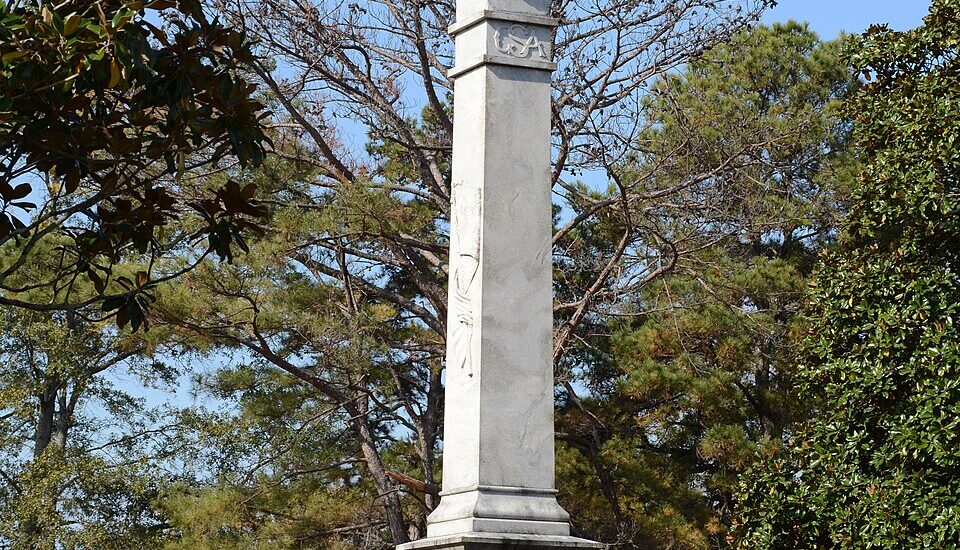Welcome to the Monticello Confederate Monument, a site that stands as a reminder of the complex history of the American South. This monument, located at the entrance to Oaklawn Cemetery in Monticello, Arkansas, was dedicated in 1915 to honor the Confederate soldiers from Drew County who served during the American Civil War.
The main sculpture is a striking marble depiction of a Confederate soldier. Standing six feet tall, the soldier is captured in a moment of vigilance, with both hands resting on a rifle. The monument itself is set on a tall marble base, reaching a total height of 20 feet. Though constructed to commemorate those who served in the Confederacy, it also serves as a point of reflection on how historical values have evolved over time.
This monument was added to the National Register of Historic Places in 1996, acknowledging its historical significance. The creation of such monuments was common in the early 20th century, a period when many communities across the South commemorated their Civil War history.
Monticello, the town surrounding this monument, has its own rich history. Founded in the mid-19th century, Monticello became an important hub due to its strategic location at the intersection of major roads and railways. This small town grew through a diversified economy of commerce, agriculture, and timber, and it played a significant role during the Civil War. Minor skirmishes took place here between Union and Confederate forces, adding to its historical tapestry.
Reflecting on this monument invites consideration of how history is remembered and interpreted. Confederate monuments across the United States have sparked discussions about memory, heritage, and the evolving values of American society. While some see these monuments as a tribute to ancestors and heritage, others view them as symbols of a past fraught with division and inequality.
As you stand here, think about the stories and lives connected to this place. Consider how they inform our understanding of the past and how they influence the narratives we construct about our collective history.




